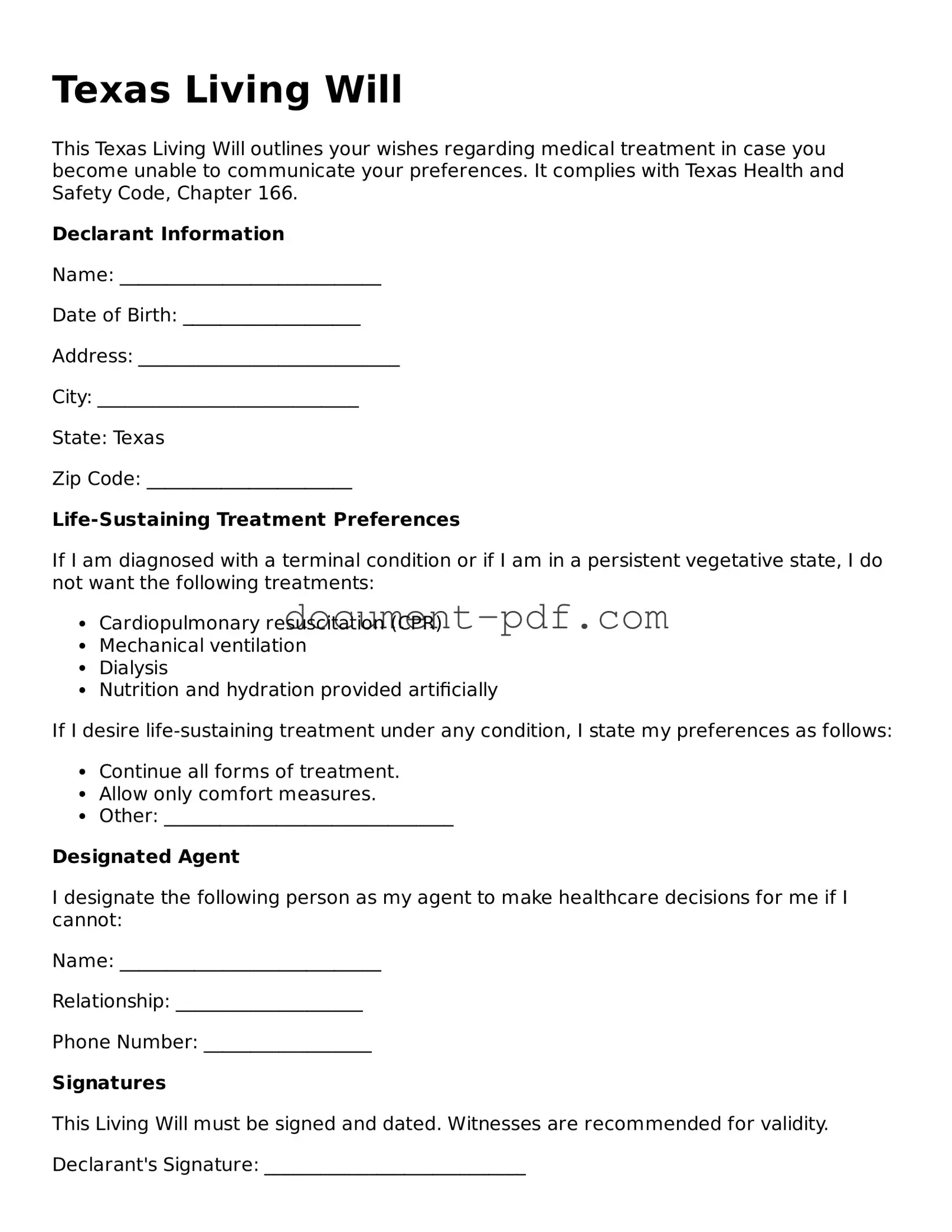Texas Living Will
This Texas Living Will outlines your wishes regarding medical treatment in case you become unable to communicate your preferences. It complies with Texas Health and Safety Code, Chapter 166.
Declarant Information
Name: ____________________________
Date of Birth: ___________________
Address: ____________________________
City: ____________________________
State: Texas
Zip Code: ______________________
Life-Sustaining Treatment Preferences
If I am diagnosed with a terminal condition or if I am in a persistent vegetative state, I do not want the following treatments:
- Cardiopulmonary resuscitation (CPR)
- Mechanical ventilation
- Dialysis
- Nutrition and hydration provided artificially
If I desire life-sustaining treatment under any condition, I state my preferences as follows:
- Continue all forms of treatment.
- Allow only comfort measures.
- Other: _______________________________
Designated Agent
I designate the following person as my agent to make healthcare decisions for me if I cannot:
Name: ____________________________
Relationship: ____________________
Phone Number: __________________
Signatures
This Living Will must be signed and dated. Witnesses are recommended for validity.
Declarant's Signature: ____________________________
Date: ______________________
Witnesses:
- Witness 1 Name: ___________________________
- Witness 1 Signature: ______________________
- Witness 1 Date: __________________________
- Witness 2 Name: ___________________________
- Witness 2 Signature: ______________________
- Witness 2 Date: __________________________
This Living Will is valid under Texas law and expresses my wishes regarding my medical treatment.
